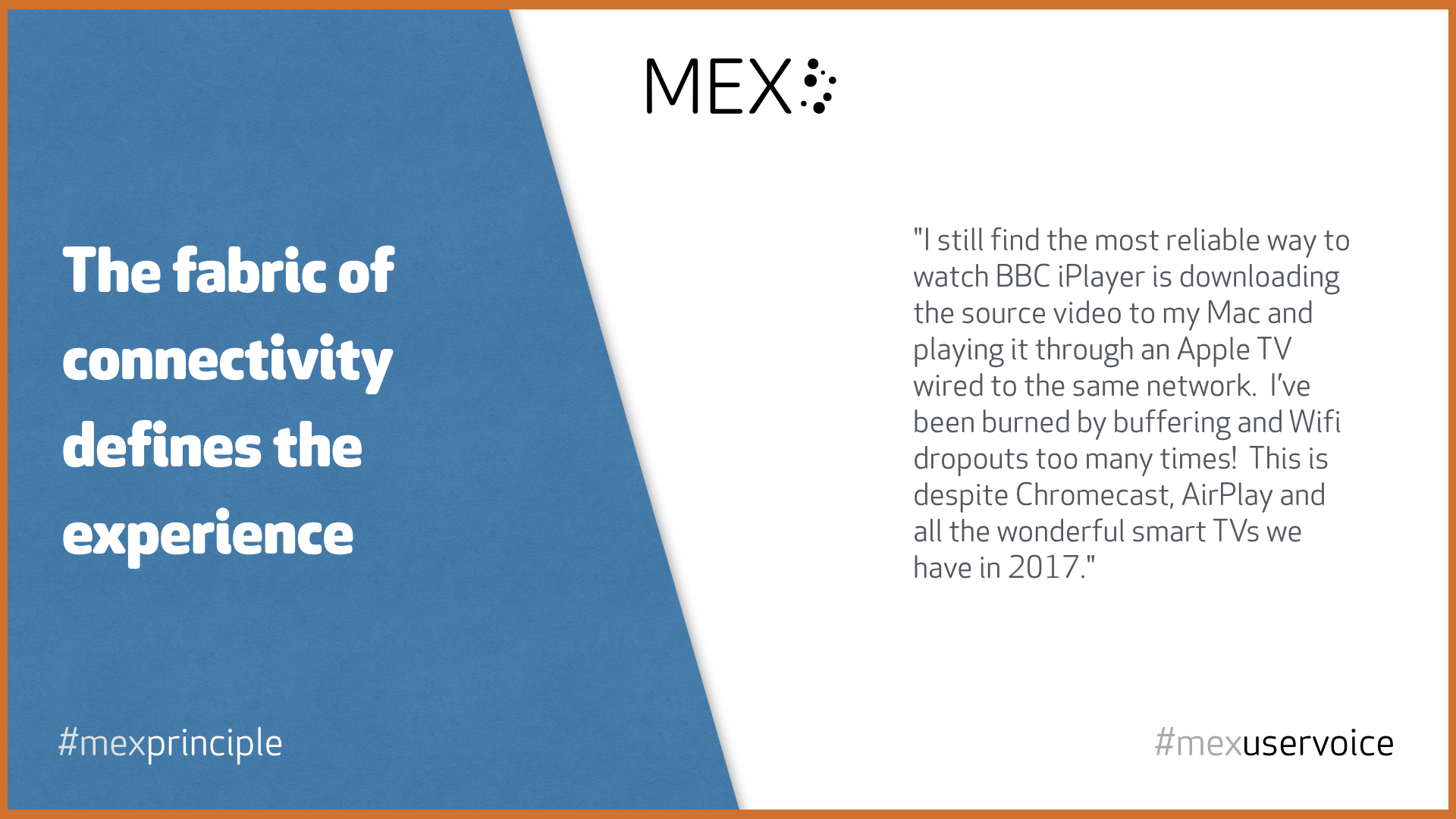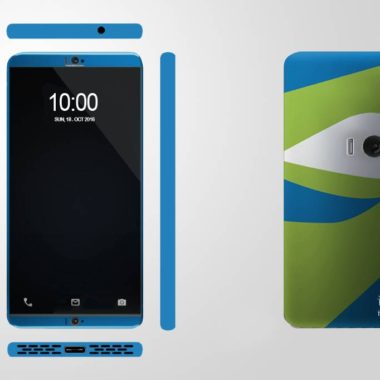The fabric of connectivity defines the experience
Multi-touchpoint experiences, whereby a number of displays, devices and sensors combine to provide an overall experience greater than the sum of its parts, are an ongoing MEX theme.
In 2009, MEX Manifesto point no. 5 for that year stated:
We believe intelligent access to a consistent, wireless cloud of user data is a key enabler of the multi-platform experience, but will succeed only when it can be accessed through a variety of interfaces, optimised for each usage scenario.
We’ve known from the outset that the underlying nature of the connections between these touchpoints influences the type and quality of experiences they can provide.
Each connection is defined by a complex set of parameters, from bandwidth and latency to range and reliability. Designers ignore these vagaries at their peril.
An obvious example is the common desire among users to watch media on a shared screen like a TV and control it from a personal device such as smartphone or watch. Despite ostensibly being offered as a core capability by all the major digital ecosystems (e.g. Apple, Google and Microsoft), the experience still varies considerably from user to user due to differences in chipsets, home networking equipment and even the file size and codecs of the media content.
From our collection of #mexuservoices:
“I still find the most reliable way to watch BBC iPlayer is downloading the source video to my Mac and playing it through an Apple TV wired to the same network. I’ve been burned by buffering and Wifi dropouts too many times! This is despite Chromecast, AirPlay and all the wonderful smart TVs we have in 2017.”
In an example like home media, it can result in frustration and reduced user engagement. However, in the numerous scenarios where multi-touchpoint experiences have a direct impact on safety, the consequences can be more serious. Consider, for instance, latency caused by poorly managed hand-off between automotive sensors, a smartphone GPS and the in-car display.
There’s no single solution to this challenge, but as a starting point, here are 3 questions to consider:
- How do I design for ‘failure first’? As multi-touchpoint experiences become more complex, failure of one or more connection is inevitable. By building upwards from a core experience which addresses user needs even when all the connection points fail, you build trust and a greater tolerance among users for the inevitable glitches.
- Does the risk of relying on the cloud for a given element of the experience outweigh the user benefit? Consider these on a case-by-case basis and prioritise reliable local usability over more sophisticated cloud capabilities when the risk outweighs the reward.
- Are real-time data available to modulate the experience based on the quality of connections? Invest in understanding the technical nuances of the multi-touchpoint architecture and employ whichever data are available to adjust the experience in response to real-time conditions, such as poor signal or insufficient bandwidth.
The principle, part of an emerging series in the MEX journal, is summarised below in a tweetable, shareable graphic. Please share and thank you for citing appropriately.





[…] MEX Principle: the fabric of connectivity defines the experience […]